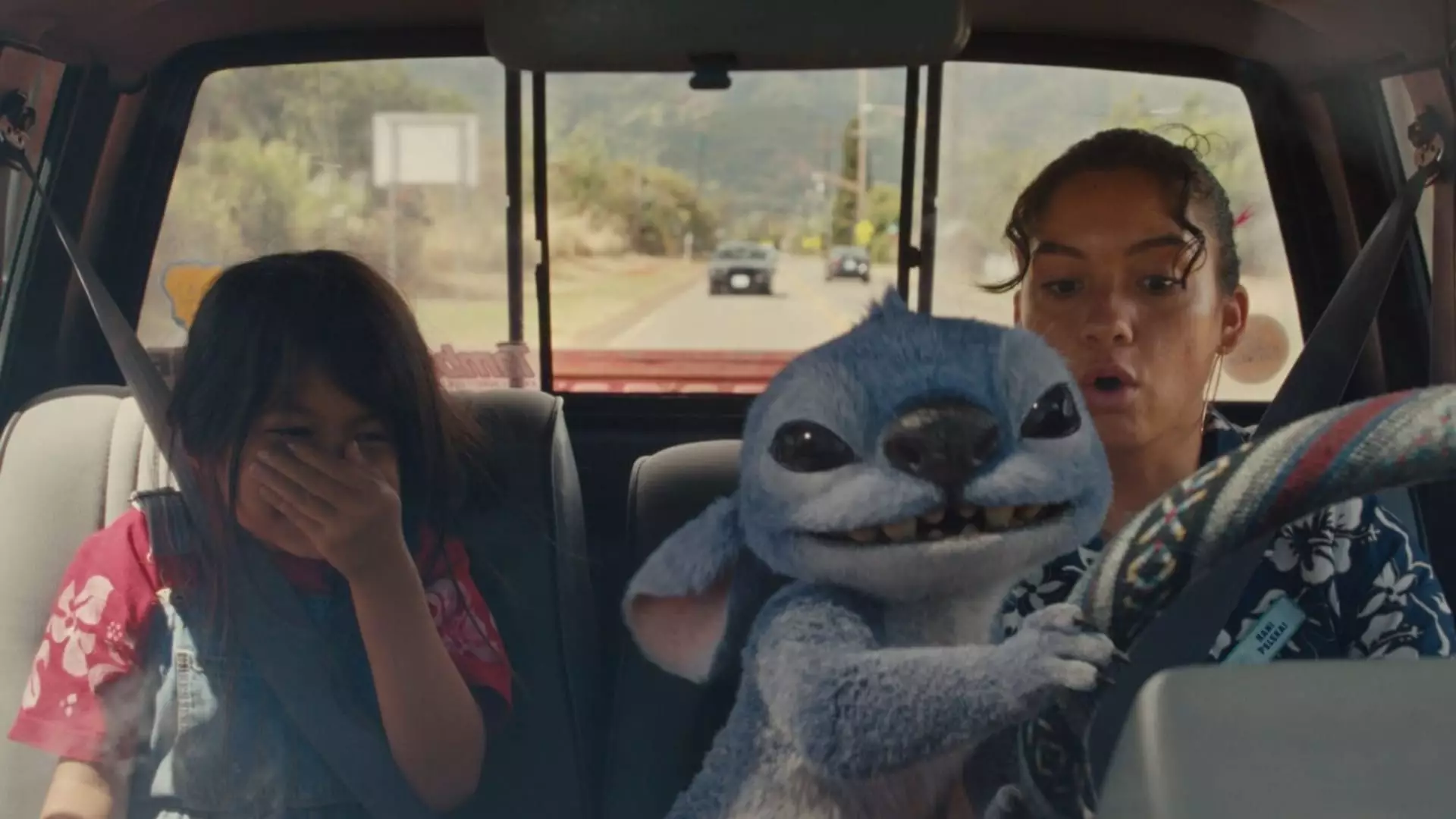The film industry’s latest resurgence hit a high note over Memorial Day Weekend, making headlines by setting a new box office record of $326 million in ticket sales. This unprecedented figure not only shattered last year’s modest haul of $132 million but also showcased the strength and resilience of the movie theater experience during uncertain economic times. Not surprisingly, stocks for major cinema chains like AMC, Marcus Theatres, and Cinemark surged in response, with AMC’s shares jumping over 20%. However, beneath this celebration lies a deeper question: is this surge a sign of sustainable growth or merely a fleeting moment marking the industry’s tentative recovery?
The weekend served as a potent reminder that the right mix of blockbuster films, like Disney’s live-action “Lilo & Stitch” and Paramount’s “Mission Impossible – The Final Reckoning,” can still draw audiences back to theaters en masse. The contrasting genres and styles—family-friendly adventure versus intense action spectacle—enabled companies to attract a metaphorically diverse audience. As Shawn Robbins from Fandango suggests, “Everything came together at the right time,” yet one must wonder if this synergy is replicable or if it stands as an isolated success.
Pandemic Resilience and the Path Ahead
The movie industry’s journey post-pandemic has been rocky, with altered viewing habits and streaming platforms vying for consumers’ attention. Despite this challenging landscape, there seems to be a burgeoning commitment from audiences to return to the theatrical experience. The sentiment echoed by AMC’s CEO, Adam Aron, highlights a turning point in the industry’s fortunes, suggesting that we may have finally crossed a threshold into a new era of cinema.
However, while it’s heartening to witness packed theaters once again, one cannot ignore the lingering issues that the industry has been grappling with. From escalating ticket prices and popcorn cost margins to competing media formats, the traditional cinematic experience is still facing significant threats. One might argue that while the current box office figures are indeed impressive, they also mask the ongoing struggles inherent in a rapidly evolving entertainment landscape. Is the surge rooted in genuine consumer desire for communal experiences, or is it fueled mostly by nostalgia and pent-up demand?
Critique of Cinema’s Future
Moreover, the question of quality remains central. While the influx of innovative and diverse film projects is essential for revitalizing an industry, it has often felt overshadowed by an over-reliance on recognizable franchises and sequels. For every record-breaking release, there are numerous lackluster entries that threaten to dilute the cinematic experience. The successful titles from the recent weekend may have set the stage for a bustling summer, yet one must remain skeptical about whether Hollywood can sustain this interest without continued originality and artistic risk.
Analysts have mentioned that this weekend’s performance may signal a broader revitalization for box office revenues over the summer, predicting that we might see more than $4 billion in ticket sales—an optimistic projection indeed. Yet, the success of a few movies should not be misconstrued as a blanket success for the entire industry. As Paul Dergarabedian of Comscore pointedly notes, this weekend should be viewed as a wave, but how many studios are capable of riding it sustainably?
The Balance of Innovation and Nostalgia
To suggest that the highest-grossing films are simply a product of nostalgia would be to overlook the complexities of audience engagement today. With a captive market eager for immersive experiences, studios must strategically balance excitement with innovation. The value of fresh storytelling cannot be overstated; however, the pressure to deliver instantly profitable sequels has the potential to inhibit creativity.
As we look to the future, one critical question lingers: Can the industry evolve quickly enough to meet changing consumer expectations without relying on nostalgia alone? Creating fresh narratives that offer something new while still honoring the franchises beloved by fans will be vital. If the industry can harness this duality of innovation and nostalgia, perhaps this recent surge will mark not just a temporary high but a genuine turning point in the cinematic experience.
In an era of dynamic change, the balance between profitability and artistic integrity has never been more crucial.

